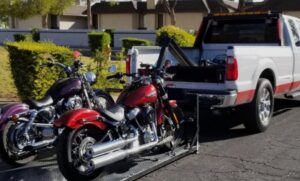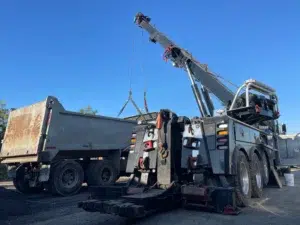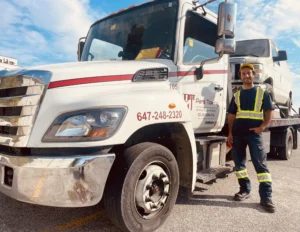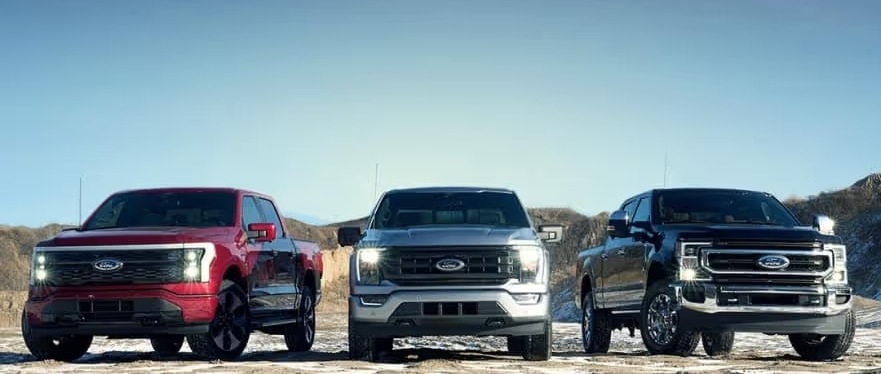In the world of trucks, trailers, and heavy equipment—the world Pars Towing operates in every day across the Aurora area and Greater Ontario—no single specification is more important than towing capacity. It is the fundamental measure of a truck’s strength and a non-negotiable safety limit for every driver. Understanding your vehicle’s towing capacity is the difference between a safe, smooth journey and a roadside breakdown that risks damage to your vehicle, your trailer, and puts other drivers in jeopardy.
This comprehensive guide is designed to demystify the concept of towing capacity. We will explain exactly what it means, how manufacturers determine the limit, and provide a detailed overview of the maximum towing capacity ranges for the most popular trucks you see on Ontario’s roads, from light-duty pickups used by contractors in Newmarket to the heavy-duty rigs hauling machinery on Highway 404.
- Learn More >>>>>How to chosing right truck for towing ?
I. Defining the Core Concept: Towing Capacity
The term towing capacity refers to the maximum weight your vehicle can safely pull when properly equipped. It is a figure set by the manufacturer that encompasses the engineering limits of the entire vehicle system: the frame, the engine and drivetrain, the suspension, and most critically, the brakes.
The most common misconception is that a truck’s raw engine power is the primary factor. While a powerful engine helps a truck pull a load up a hill, the ability to stop that load is what ultimately defines the maximum safe towing capacity. Overloading a vehicle is dangerous because it severely compromises braking distance, steering control, and the stability of the entire rig.
How Towing Capacity is Calculated: The Key Ratings
Automakers do not pull the towing capacity number out of thin air. It is determined by a complex calculation that relies on several critical ratings found on your vehicle’s door jamb sticker or in the owner’s manual:
- Curb Weight (CW): The weight of the empty vehicle with all standard equipment, fluids, and a full tank of fuel, but with no passengers or cargo.
- Gross Vehicle Weight Rating (GVWR): The maximum total weight the fully loaded vehicle can weigh. This includes the vehicle itself (CW), passengers, cargo, and the trailer’s tongue weight (the downward pressure the trailer places on the hitch).
- Gross Combined Weight Rating (GCWR): This is the absolute maximum allowable weight of the entire combination—the tow vehicle, all its contents, and the fully loaded trailer.
The actual maximum towing capacity is typically derived from the equation:
Towing Capacity=GCWR−(Curb Weight+All Passengers and Cargo)
The figure published by the manufacturer is usually the maximum possible towing capacity for the lightest version of that truck, often a single-cab, two-wheel drive model with minimal options. Adding options, heavier axles, or simply a full load of passengers and tools will reduce the usable towing capacity. This is why knowing your truck’s specific ratings is essential for safe towing.

- Learn More >>>>> Choosing the Right Heavy Duty Tow Truck Services for Your Fleet
The Role of Tongue Weight
One critical detail that affects your available towing capacity is the tongue weight (TW). This is the downward force exerted by the trailer coupler onto the tow ball of the hitch.
- Ideal Ratio: Tongue weight should ideally be between 10% and 15% of the total loaded trailer weight.
- Impact: The tongue weight is counted directly against your truck’s payload capacity (and thus, its GVWR). If you have a maximum payload of 2,000 pounds and your trailer has a tongue weight of 1,000 pounds, you only have 1,000 pounds left for passengers and cargo inside the truck. Exceeding either the towing capacity or the GVWR is unsafe and against regulations.
II. Towing Capacity by Truck Class: A General Overview
In the world of towing, trucks are generally categorized into three main classes, which directly correlate with their maximum towing capacity. Pars Towing handles vehicles across all these classes in the Aurora and GTA area, whether they are safely towing a load or broken down on the side of the road.
1. Light-Duty Trucks (Half-Ton)
Light-duty trucks are the workhorses of the casual user and many tradespeople. They are known for their comfort, versatility, and impressive modern towing capacity, which has dramatically increased in recent years.
| Popular Light-Duty Trucks | Typical Max Towing Capacity Range (When Properly Equipped) | Best For Towing |
| Ford F-150 | 7,000 lbs to 14,000 lbs | Mid-size travel trailers, utility trailers, enclosed snowmobile trailers, small boats. |
| Chevrolet Silverado 1500 / GMC Sierra 1500 | 6,000 lbs to 13,300 lbs | Recreational towing, landscaping trailers, classic car hauls. |
| Ram 1500 | 6,500 lbs to 12,750 lbs | All-around utility, construction material hauls, medium-sized RVs. |
| Toyota Tundra | 8,000 lbs to 12,000 lbs | Off-road equipment, smaller skid-steers, utility work. |
A key takeaway here is that to reach the maximum published towing capacity, such as the Ford F-150’s 14,000 pounds, you must select the specific engine (e.g., the 3.5L EcoBoost V6) and the optional Max Trailer Tow Package. A base model’s towing capacity will be significantly lower. Always verify the specifications for your exact truck before hooking up a trailer.
- Learn More >>>>> Light duty towing
2. Medium-Duty Trucks (Three-Quarter-Ton)
Medium-duty trucks, often referred to as 3/4-ton trucks (like the 2500 or F-250), are the first step into serious commercial or heavy recreational towing. These trucks feature stronger frames, larger brakes, more robust suspension components, and often come equipped with diesel engine options that dramatically increase their gross combined weight rating.
| Popular Medium-Duty Trucks | Typical Max Towing Capacity Range (Conventional Hitch) | Typical Max Towing Capacity Range (Fifth-Wheel/Gooseneck) |
| Chevrolet Silverado 2500HD / GMC Sierra 2500HD | 14,000 lbs to 20,000 lbs | Up to 22,430 lbs |
| Ford F-250 Super Duty | 15,000 lbs to 22,000 lbs | Up to 23,000 lbs |
| Ram 2500 Heavy Duty | 13,000 lbs to 20,000 lbs | Up to 20,000 lbs |
These trucks are the go-to choice for drivers in Ontario hauling large fifth-wheel RVs, heavy boat trailers, or medium-sized equipment for construction sites. The conventional hitch limit is always lower than the fifth-wheel limit because the fifth-wheel mount distributes the tongue weight directly over the rear axle, increasing stability and utilizing the truck’s full towing capacity more effectively.
- Learn More >>>>>Medium duty towing
3. Heavy-Duty Trucks (One-Ton and Above)
The heavy-duty, one-ton segment (3500 or F-350 and up) represents the pinnacle of commercial towing capacity for consumer trucks. These are the rigs Pars Towing often uses for our own medium- and heavy-duty towing services. They are designed for maximum weight, often featuring dual rear wheels (dually) for enhanced stability and even larger diesel engines. The maximum towing capacity figures in this class are astronomical, exceeding 30,000 pounds.
| Popular Heavy-Duty Trucks | Max Conventional Towing Capacity Range | Max Gooseneck/Fifth-Wheel Towing Capacity (Dually) |
| Ram 3500 Heavy Duty | Up to 23,000 lbs | Up to 37,100 lbs |
| Ford F-350 / F-450 Super Duty | Up to 28,000 lbs | Up to 40,000 lbs (F-450) |
| Chevrolet Silverado 3500HD / GMC Sierra 3500HD | Up to 20,000 lbs | Up to 36,000 lbs |
These trucks are primarily used for transporting heavy machinery, multi-car trailers, large industrial equipment, and the biggest fifth-wheel recreational trailers on the market. In this weight class, proper licensing, specialized braking systems, and advanced trailering technology are mandatory for safe operation in Ontario.

- Learn More >>>>>Heavy duty towing service
III. The Pars Towing Perspective: Why Capacity Matters to Our Customers
At Pars Towing, servicing the Aurora and Ontario community means dealing with the aftermath of towing mistakes every week. Whether it is a snapped axle, a burnt-out transmission, or a vehicle involved in an accident due to an overloaded trailer, exceeding your truck’s towing capacity is a serious and costly risk.
1. Safety and Liability
An overloaded vehicle is an unsafe vehicle. The manufacturer’s towing capacity is a legal and engineering limit. When a truck’s braking system is overwhelmed by a trailer that is too heavy, the result can be catastrophic, especially on Ontario’s busy highways. The truck may not be able to stop in time, leading to a severe collision. In the event of an accident, insurance companies and law enforcement will always verify that the load was within the truck’s published limits. Exceeding the towing capacity can lead to criminal negligence charges and can void your insurance coverage.
2. Vehicle Longevity and Repair Costs
Continuously pushing your truck beyond its recommended towing capacity will lead to premature wear and failure of major components, which are expensive to repair, especially in the Greater Toronto Area.
- Transmission: Overheating is common when towing an excessive load, leading to costly transmission failure.
- Brakes: Brakes will wear out rapidly, and severe towing can even cause brake fluid to boil, leading to a total loss of braking ability.
- Suspension and Frame: Excessive weight can crack the frame, warp the axles, and permanently damage the leaf springs and shocks.
A new transmission or a set of axles costs far more than the price of using a professional towing service or a heavier-rated truck.
3. When Your Truck Becomes Our Load
When a breakdown occurs due to an overloaded condition—whether it is a mechanical failure or an accident—Pars Towing is called in. We must then assess the total weight of your truck, the load, and the condition of the breakdown to dispatch the correct recovery vehicle.
- Light-Duty Towing: Standard breakdowns (flat tires, lockouts) for light-duty trucks and their loads require our typical flatbed or wheel-lift trucks.
- Medium and Heavy-Duty Towing: If a heavy-duty truck breaks down with a full, heavy load attached, we often need to bring in multiple specialized vehicles. This may involve a heavy-duty wrecker to tow the truck and a separate recovery unit to secure or haul the trailer and its cargo. This complex recovery operation is significantly more time-consuming and expensive than a standard tow.
Our flatbed towing service, which is mandatory for many high-end or damaged vehicles, is always matched to the appropriate towing capacity for safety. We carry a range of tow trucks, from light-duty flatbeds for cars and SUVs to medium-duty trucks for construction equipment and heavy 3/4-ton pickups.
- Learn More >>>>>How to Choose the Best Towing Service in the GTA
IV. Beyond the Numbers: Safe Towing Practices in Ontario
Understanding the towing capacity of your truck is only the first step. For every driver in Aurora, Newmarket, or anywhere in Ontario, following these safe towing practices is crucial for ensuring a safe trip.
- Never Assume: The number on your friend’s similar-looking truck might not be the same as yours. Check the official GCWR and GVWR sticker on the driver’s side door jamb for the definitive towing capacity of your specific vehicle.
- Factor in All Weight: Remember to subtract the weight of all passengers, the hitch assembly, the fuel, and all cargo (tools, luggage, bikes, etc.) from the published maximum to get your actual usable towing capacity.
- Load Distribution: Ensure the trailer’s load is distributed correctly, resulting in a tongue weight that is 10-15% of the total trailer weight. Too much tongue weight overloads the rear axle, and too little can cause dangerous trailer sway.
- Use the Right Hitch: Ensure your hitch (Class I through V) is rated to handle the weight of your loaded trailer. A Class III hitch, for example, might be rated to handle a conventional towing capacity of up to 8,000 lbs, and must be matched to your truck’s rating.
- Check Your Brakes and Tires: Confirm your truck’s brakes are in excellent condition, and always use an electronic brake controller for trailers over a certain weight (usually 1,500 lbs). Ensure all tires on both the truck and the trailer are properly inflated for the load.
In conclusion, towing capacity is the most critical safety feature you have when hauling a load. Do your research, know your specific vehicle’s limitations, and always err on the side of caution. If you are ever unsure, or if an unexpected failure leaves you stranded, know that the professional, high-capacity fleet at Pars Towing is ready to respond anywhere in the Aurora area and across Ontario to ensure both you and your load are safely recovered and transported. We have the right towing capacity to handle any truck, no matter the size of the challenge.








